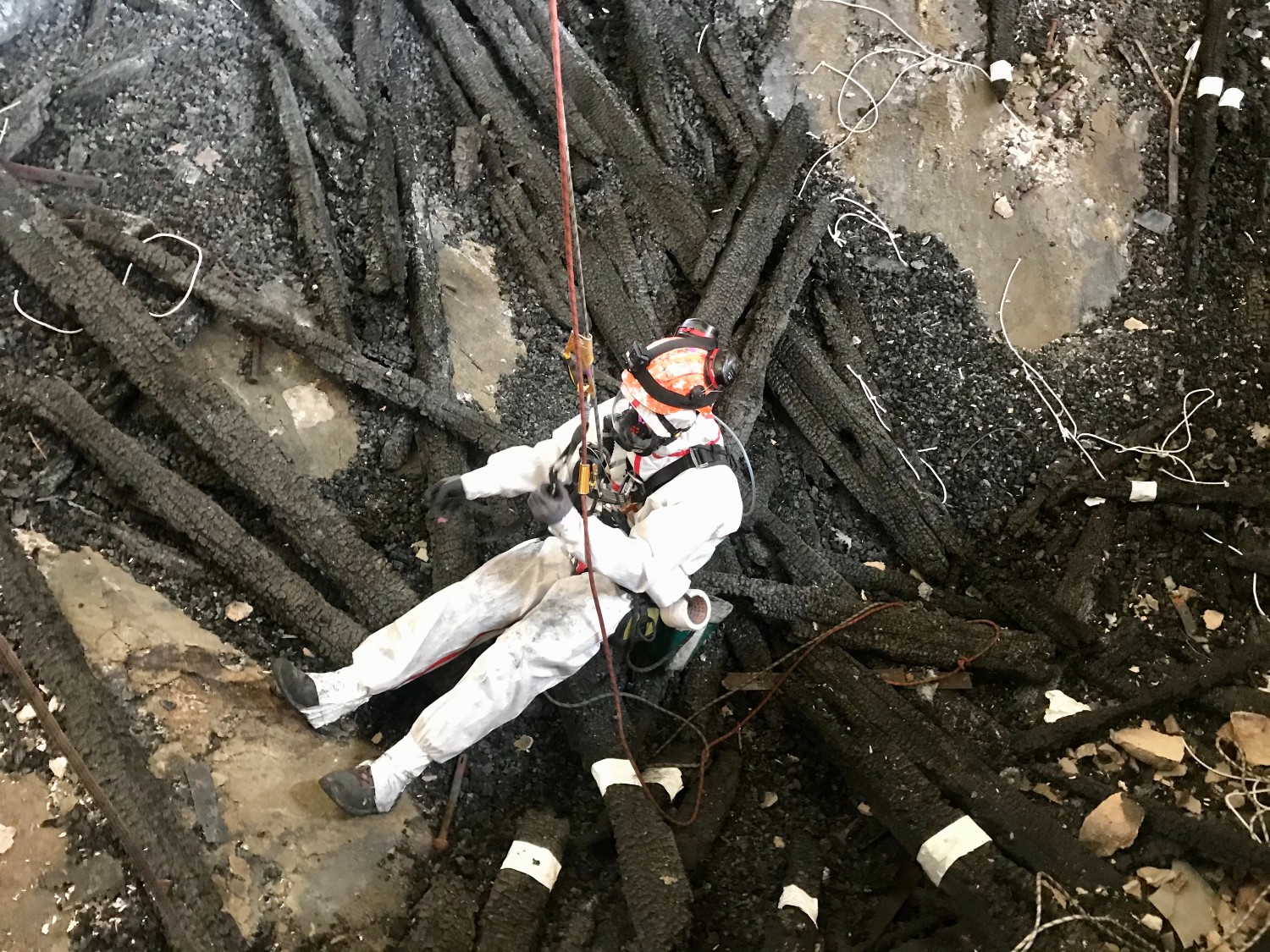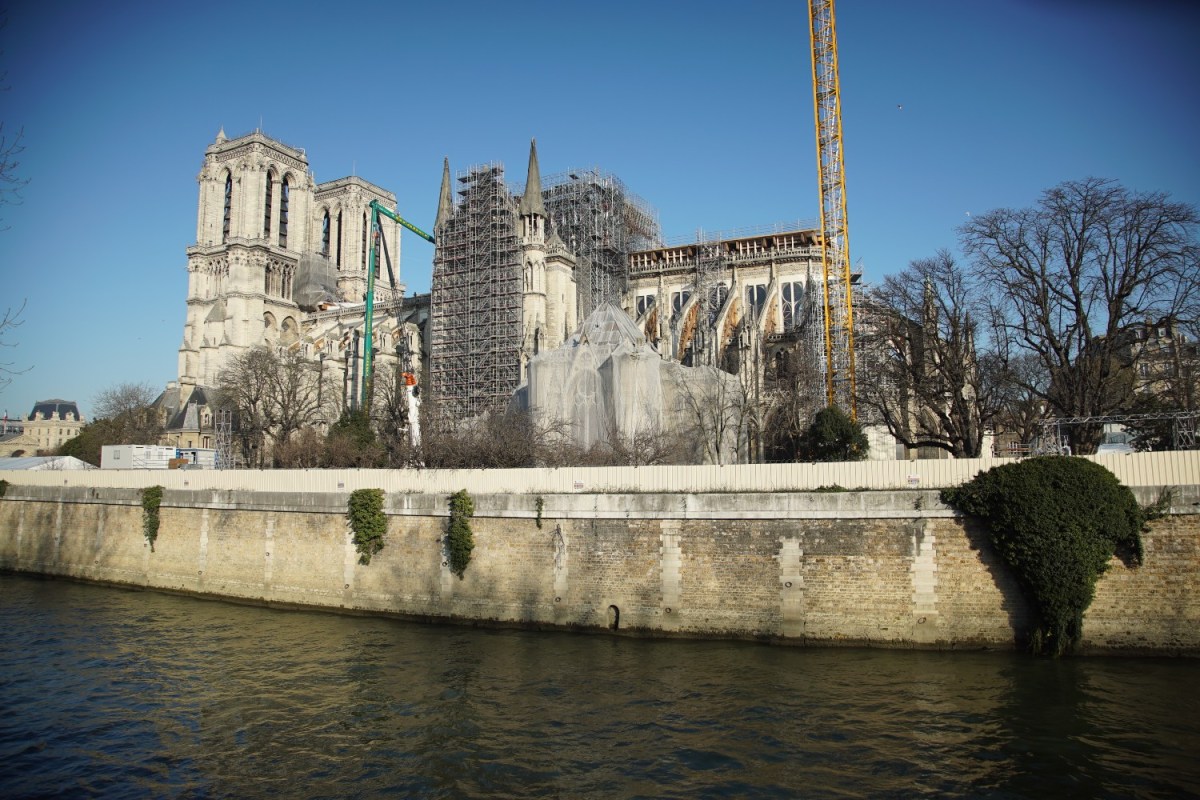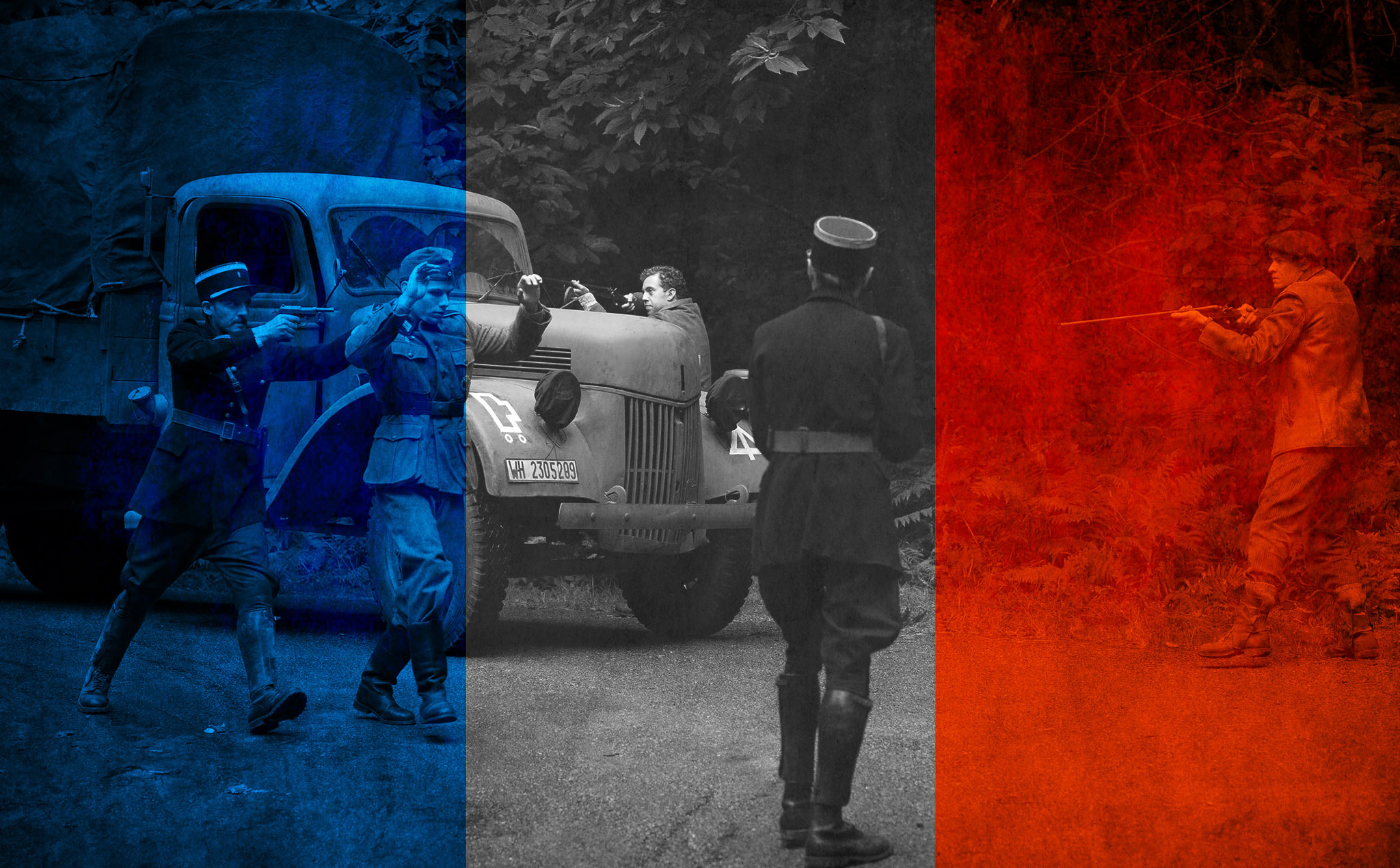In April of 2019, Notre-Dame Cathedral in Paris was almost destroyed in a fire. The haunting images of the centuries-old building engulfed in flames shook viewers around the world. Whether the cathedral represented an architectural marvel or an important religious site (or, for some viewers, both), the images of an iconic building that had withstood political upheaval and war over the years being at risk of collapsing made for a harrowing site.
The new NOVA documentary Saving Notre Dame offers a fascinating look at the efforts to keep the cathedral standing, beginning with the initial response to the fire and continuing to the work being done to restore it. What makes this especially fascinating is the array of disciplines involved: everything from state-of-the-art architectural software to archaic woodworking tools have played a part in the restoration efforts.
Here are a few things we learned from watching the documentary.

Putting Out the Fire Was Only the Beginning
The dramatic attempts to put out the fire at Notre-Dame made for some absolutely gripping news broadcasts. It didn’t help matters that the fire was initially too high for firefighters’ hoses to reach; firefighters also needed to mount a daring rescue of the bell towers, lest the wood holding the bells in place burn, causing a number of massive wooden bells to fall, each comparable to a wrecking ball in size and density.
Once the fire was extinguished, the cathedral still wasn’t out of harm’s way. The experts interviewed in Saving Notre Dame point out that the cathedral’s vaulting was at risk of collapse in the weeks and months following the fire — and that its collapse could have taken the rest of the building down with it. The restoration team used sensors to monitor its stability, and built custom wooden supports for each of the cathedral’s flying buttresses to bolster the structure.
Fossils (and Skulls) Were Critical to the Restoration
Much of the cathedral was made from limestone — which, in medieval times, was taken from now-defunct quarries within the city itself. (More on that in a moment.) But not all limestone is the same: the limestone used for the roof and for the statues have very different properties, for instance. The restoration team needed to find comparable matches for each type — which led them to look for fossils within the existing limestone, and compare it to deposits found in the now-abandoned quarries.
Why are those quarries abandoned, you might ask? Well, for the last few centuries, they’ve had a different purpose: they’re now home to the city’s catacombs. Which means lots of images of the scientists researching limestone walking around piles of skulls and bones in the tunnels below Paris.
Restoring the Cathedral Involved Medieval Axes
The technology on display in Saving Notre Dame offers a wild mix of old and new. Part of the documentary focuses on the creation of a “digital twin” for the cathedral, documenting the different components of the building and explaining how its construction worked. The medieval architects weren’t big on documentation, it turns out — and so part of the restoration effort involves reverse-engineering how parts of the cathedral were built.
Rebuilding the wooden roof of the cathedral, made from around 1,300 trees, leads to some of the documentary’s most interesting moments. The burned beams were meticulously documented to get a sense of the type of wood used, the age of the trees felled to produce it and even the marks left by the medieval carpenters who made it. Images of a similar restoration project involved the work of heritage carpenters, whose commitment to period technologies includes some impressive and archaic-looking axes that would seem equally at home chopping wood or defending their local castle.
The Best Way to Remove Melted Scaffolding Is … More Scaffolding
The cathedral was already undergoing a renovation when the fire broke out. That means that besides the wood, stone and lead that were burned on the cathedral itself, so too was the scaffolding utilized for the renovations burned and melted beyond recognition.
The documentary estimates that this was around 50,000 steel beams — all of which now resembled a large-scale abstract sculpture, and needed to be cleared out of the cathedral. How did the restoration team do this? As it turns out, they built more scaffolding around the melted scaffolding, allowing them to remove it gradually.
This article was featured in the InsideHook newsletter. Sign up now.























